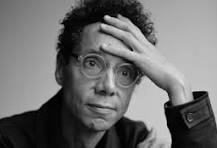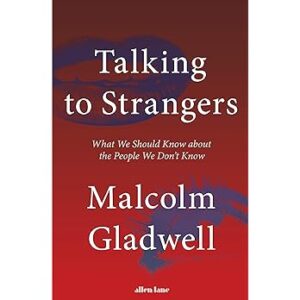Talking to Strangers
Malcom Gladwell has so impressed the reading world with his analysis of life, that the term “Gladwellian intellectual adventure” has been coined.
And though I confess to not having jumped on his bandwagon before Talking to Strangers, when I saw he had written about Sandra Bland, I had to know his thoughts.
We now live and go through our lives with cable news. But I am taking you back to July of 2015. I’m white, Black Lives DO Matter. And then I am hearing of a Black woman who had just arrived in Texas for a new job, a new life, but had been arrested for a traffic stop. And then I am hearing that just days later, it was assumed she had hung herself in her jail cell. I was enraged, had many questions, that to this day and even beyond this book, have not been answered. Why? Because we are still living in a time when these questions challenge us to find answers, give answers that we don’t want to face.
HOW TALKING TO STRANGERS IS ORGANIZED
Malcom Gladwell, an amazing writer, thinker, journalist, starts this book with Sandra, and ends it with Sandra. But in between, he is able to reveal the disconnects in society, by exploring, as only he can, history, psychology and the roots of evil in our society. Oh, Gladwell wants to come to some conclusion about Sandra, but before that, he explores how often we don’t have the big picture. Why? Because in many situations, we are STRANGERS to each other, and that means there are no exact rules to govern human interactions.
Gladwell attacks the problem in sections: some being Default to the Truth where he exams in detail the Sandusky (sex with a child) Case. Another being Transparency, which includes the Amanda Knox case and a fraternity party sex case.
COUPLING
But the most interesting section is Coupling,where Gladwell makes the case that often two things that go together are hard to separate. Suicide is often coupled. Suicide and the Golden Gate Bridge; Sylvia Plath and how gas was delivered to homes before safety measures were introduced; preventive police patrolling in Kansas City, Missouri and the interrogation of Black men and youths.
Gladwell concludes the coupling section stating this: “There is something about the idea of coupling–of the notion that a stranger’s behavior is tightly connected to place and context that eludes us. It leads us to misunderstand some of our greatest poets (Sylvia Plath, Anne Sexton), to be indifferent to the suicidal, and to send police officers on senseless errands–this case, Sandra Bland.
MOR ABOUT SANDRA BLAND; and note, all parenthesis are mine.
In this book, when Gladwell is discussing in detail the Sandra Bland case, he asks a major question:
“So what happens when a police officer carries that fundamental misconception– (that people are going to break laws, do wrong, especially if they are Black)–then add to that, the problems of default to truth and transparency? Because consider, by their very nature, a police officer can make us feel afraid, feel wrong when we are right, liars when we are truth tellers, especially if one is a person of color). So again, what happens? YOU GET SANDRA BLAND.”
YES, SADLY. You get two personalities who view the world differently, should not be thrown together in a tense situation. And unfortunately, as a reader and a human, we are left with this: “If you are blind to the ideas that underlie our mistakes with strangers—and to the institutions and practices that we construct AROUND those ideas—then all you are left with is the personal…and now Sandra Bland, who—at the end of the lengthy postmortem into that fateful traffic strop…somehow becomes the villain of the story.” And thus we must look for solutions, one being: READ THIS BOOK.


